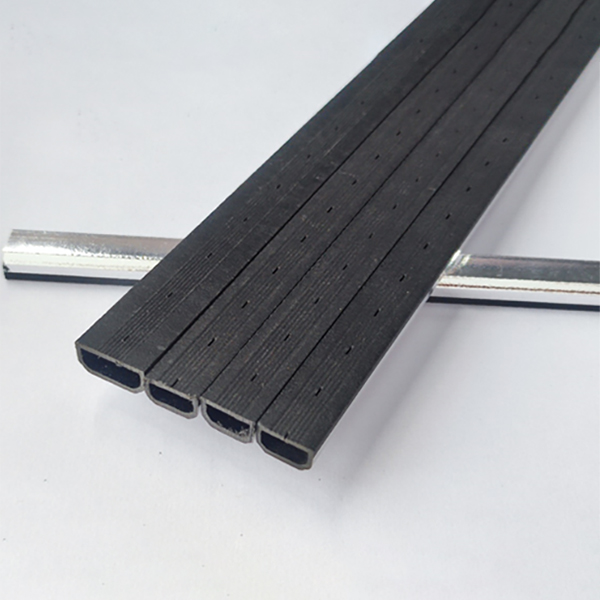Maximizing Energy Efficiency: How the 12A Middle Glass Warm Edge Spacer Drives Energy Savings in Buildings
2024-05-24
In the modern era of construction and design, energy efficiency stands at the forefront of priorities for both residential and commercial buildings. One often overlooked yet highly impactful component in achieving energy efficiency is the window spacer. The 12A Middle Glass Warm Edge Spacer is a cutting-edge innovation that significantly contributes to energy savings. Let’s explore how this advanced spacer works to enhance energy efficiency in buildings.
The Science Behind the 12A Middle Glass Warm Edge Spacer
The primary function of the 12A Middle Glass Warm Edge Spacer is to separate the glass panes in an insulated glass unit (IGU). Unlike traditional aluminum spacers, which conduct heat and cold, the 12A spacer is made from materials with low thermal conductivity. This key difference forms the foundation of its energy-saving capabilities.
Key Contributions to Energy Savings
1. Reduction of Thermal Bridging:
Traditional aluminum spacers act as thermal bridges, allowing heat to pass through the edges of the window. This results in significant heat loss during winter and heat gain during summer, leading to higher energy consumption for heating and cooling. The 12A spacer, made from polymeric composites and other low-conductivity materials, minimizes thermal bridging. This reduction in heat transfer means less energy is required to maintain a comfortable indoor temperature, directly translating to energy savings.
2. Enhanced Insulation Performance:
The 12A Middle Glass Warm Edge Spacer improves the overall insulation performance of windows. By maintaining a better seal and using materials that do not conduct heat, it helps to keep the warm air inside during the winter and the cool air inside during the summer. This enhanced insulation reduces the reliance on HVAC systems, leading to lower energy bills.
3. Minimization of Condensation:
Condensation can compromise the insulating properties of windows. When warm, moist indoor air meets the cold surface of a window, condensation forms, which can lead to increased heat transfer. The 12A spacer helps to keep the edges of the glass warmer, reducing the likelihood of condensation forming. This not only preserves the insulating properties of the IGU but also prevents potential damage and energy loss associated with condensation.
4. Improved Window Durability:
The durability and longevity of windows contribute to their energy efficiency. The 12A spacer's design and materials ensure that the IGU remains effective over a longer period. By preventing seal failure and maintaining structural integrity, it ensures that windows continue to perform optimally, thereby maintaining energy efficiency and reducing the need for costly replacements or repairs.
5. Contribution to Overall Building Envelope Performance:
Windows are a critical component of a building’s envelope, and their performance directly impacts the building's overall energy efficiency. By improving the thermal performance of windows, the 12A spacer contributes to a more efficient building envelope. This holistic improvement helps in achieving better energy ratings and compliance with energy efficiency standards and certifications, such as LEED or Passive House standards.
Real-World Impacts and Case Studies
- Residential Applications: Homeowners using windows with the 12A Middle Glass Warm Edge Spacer report noticeable reductions in their heating and cooling costs. For instance, in a study of a suburban housing project, homes with the 12A spacer-equipped windows showed a 15% reduction in energy consumption compared to those with traditional aluminum spacers.
- Commercial Applications: In a retrofit of a large office building, the implementation of the 12A spacer in all new IGUs led to a 20% decrease in annual energy costs. The improved thermal performance also contributed to enhanced occupant comfort, reducing complaints about drafts and inconsistent temperatures.
Conclusion
The 12A Middle Glass Warm Edge Spacer plays a pivotal role in driving energy savings in both residential and commercial buildings. By reducing thermal bridging, enhancing insulation, minimizing condensation, and improving the durability of windows, it ensures that buildings are more energy-efficient and comfortable. As the construction industry continues to prioritize sustainability and energy efficiency, the adoption of advanced components like the 12A spacer will be crucial in achieving these goals. Whether you’re a homeowner looking to reduce energy bills or a commercial property manager aiming for sustainability targets, the 12A Middle Glass Warm Edge Spacer is a smart investment in energy efficiency and long-term performance.



